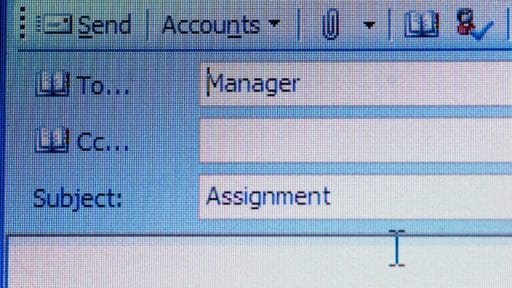How to Write Amazing Emails in English
We are communicating with others all the time. We do that through social media, texts, letters, calls, meetings… When it comes to electronic communication though, email is the most popular way to communicate. It is fast, easy, and it works for all purposes. You can email a friend, you can email your boss, you can even email the president of your country (I’m not kidding, there’s a “contact the president” page on the White House website). In this blog you will learn how to write emails in English.
In order to make your life easier when it comes to writing and replying to emails, we will go over the structure of a good email, give you some tips to get your message across effectively, and some samples for you to refer to whenever you are unsure.
Pay attention to cultural differences
I remember the very first time I had to email an English native speaker. It was the woman who was going to be my advisor at the university I was going to study in the USA. I didn’t give much thought to the email — ‘it is just an email,’ I thought to myself. And writing emails was something I used to do quite often. I was wrong. Her reply to my initial email was very straight to the point, with no exclamation marks (unlike the one I had sent), no ‘Hugs’ or ‘Kisses’ at the end of the email, besides some other things.

At first, I thought she was rude, but then I understood that there are some cultural differences when writing an email in a different language. To avoid any problems, I suggest you keep reading this post to understand how to write a good email in English. Notice that by following these steps you will be adjusting to your audience, and that doesn’t mean the way you write an email in your native language is incorrect. Again, it is just a cultural difference.
How to spell it: e-mail or email?
Before we dive into the structure of a good email, let’s tackle this common question. Some people are not sure whether to say ‘e-mail’ or ‘email’. Here is what you need to know. Both spellings are correct. In order to decide which one to use, the hyphenated one or the one without the hyphen, it is a good idea to check the preference of the style guide you are required to use. If you are not following a style guide, then you are free to choose the one you prefer.
Maybe you never gave much thought to it, but the ‘e’ in email comes from ‘electronic’. An email is an ‘electronic mail’. If you think about it, there are some other words in which we abbreviate the electronic to just ‘e’. E-commerce and e-learning, for instance.
To make things clear: it is up to you the decision to say ‘email’ or ‘e-mail’. Personally, I prefer email because it is easier to write. Let me know your thoughts about this matter in the comment section, will you?
The structure of your email in English
Let’s take a look at all the things you should include in your email. We will go over the six elements of a good email: the subject line, the greeting, the opening sentence, the body of your message, the instruction regarding the next step, and the closing line.

The subject line
Think about the reason why you are writing this email. If you have decided to write this message, you have a reason why you are doing it. What is the most important thing about this email? This is your subject line.
The subject line should be specific and not too short. Besides that, you shouldn’t use a period (.) at the end of the subject line. Also, don’t ever forget to write a subject line! By not doing so, your message is more likely to be deleted.
Let’s take a look at some examples of subject lines.
- Bad: Application
- Good: Job Application: Social Media Manager
- Bad: Tomorrow
- Good: Meeting tomorrow at 9 a.m.
- Bad: Project
- Good: Ideas for our Final Project
Besides the subject line, you will also need to fill some other fields before sending out and email: the recipient’s email address (‘to’), the carbon copy (‘cc’), and the blind carbon copy (‘bcc’).
The carbon copy is a field where you can add another person’s email address. The idea is to send a copy of the email to another person who is also interested in the matter of the email. The blind carbon copy is similar to the carbon copy. The difference here is that the main recipient will not be able to see the email address which was added to the ‘bcc’ field.
Greeting
In order to decide which greeting to use, you must think about who is your contact. If you don’t know their name, you can go with any of the following options:
- Dear Sir/Madam;
- To whom it may concern.
However, I do think those can be awkward since they are so generic and impersonal. My advice to you is: find your recipient’s name. You know, LinkedIn is a great resource. If you type “recruiter company xxx” and it’s very likely you will find the person that you are looking for. You can also call the company and find that information — sometimes being old-fashioned can pay off. However, if you do all that and end up with no name, I would probably go with just “Hello”.

Another thing you should pay attention to is how to use titles to address people. For men, we go with ‘Mr.’. So, if you are talking to John Smith, you will say ‘Dear Mr. Smith’. When it comes to women, you should always go with ‘Ms.’. There is the title ‘Mrs.’, which is used to refer to a married woman. However, when it comes to emails, the best practice is saying ‘Ms.’, since a woman’s marital status can be unknown and, even if known, it isn’t considered relevant in the business world.
If you know who you are talking to, you can choose from these options:
- Dear Mr. (last name);
- Dear Ms. (last name);
- Hello (first name).
When sending an email to a friend, you can also use hi or hey. However, these don’t sound very professional.
The opening sentence
The way you start the email really depends on the purpose of your message. You can start by telling the recipient who you are or where you know each other from. Here you can also mention any connections you may have.
- My name is Bruna Silva, and I’m a content writer with PrepEng Online English School.
- This is Bruna Silva and I’m a content writer. My colleague Sarah Smith has told me a lot about your company…
You can follow that by telling them what is the purpose of the email they are reading. You can say something like:
- I’m reaching out about…
- As we discussed on our call,
- I’m getting back to you about…
- To follow up on our meeting,
- As promised, I’m…
If you are writing a reply to an email, you can start with:
- Thank you for the quick response.
- … the update
- … your help.
- … getting in touch.

The body of your message
Here is where you will develop your message. Some rules you should follow are:
- Write shorter sentences;
- Keep the language simple;
- Avoid too many adjectives;
- Divide the text into a few paragraphs;
- Pay attention to your grammar (you can use a website such as Grammarly to scan your text for all types of mistakes);
- Avoid typos. Typo is short for ‘typographical error’, which means a mistake made when typing something.
The next step
After a few paragraphs, this is the time to start wrapping up your email. Some sentences you could use are:
- Please let me know if this works for you.
- Let me know if you have any further questions.
- Should you need any further information, please do not hesitate to contact me.
- Let me know if you need anything else.
- I look forward to hearing from you soon.
- I’m looking forward to your reply.
- I would appreciate your immediate attention to this matter
Closing
Before your name, title, and contact info, it is important to add a sign-off. Here is a list of good ones you can choose from.
- Best
- Best regards
- All the best
- Regards
- Warm regards
- Thank you
When emailing a friend or a family remember, you can also sign-off with:
- Yours
- Cheers
- See you
- Lots of love
- XOXO (this means kisses and hugs)

I usually sign-off like this:
Best,
Bruna Silva
Content Writer, PrepEng
999-9999
Sample emails for download
If you are looking for some email samples, we’ve got you covered. Here is a flipbook with three examples of good emails you can use as a reference. We have written formal email writing examples as well as professional email writing examples.
You are currently viewing a placeholder content from Default. To access the actual content, click the button below. Please note that doing so will share data with third-party providers.
More InformationGet the free ebook
Sample Emails in English
Now you know how to write emails in English! Remember to pay attention to cultural differences when communicating with a global team and make sure to run a grammar/spell check before hitting send. Also, if you are sending an attachment make sure that it is indeed attached to your message. We hope this blog post makes writing emails in English easier for you. Happy writing!

